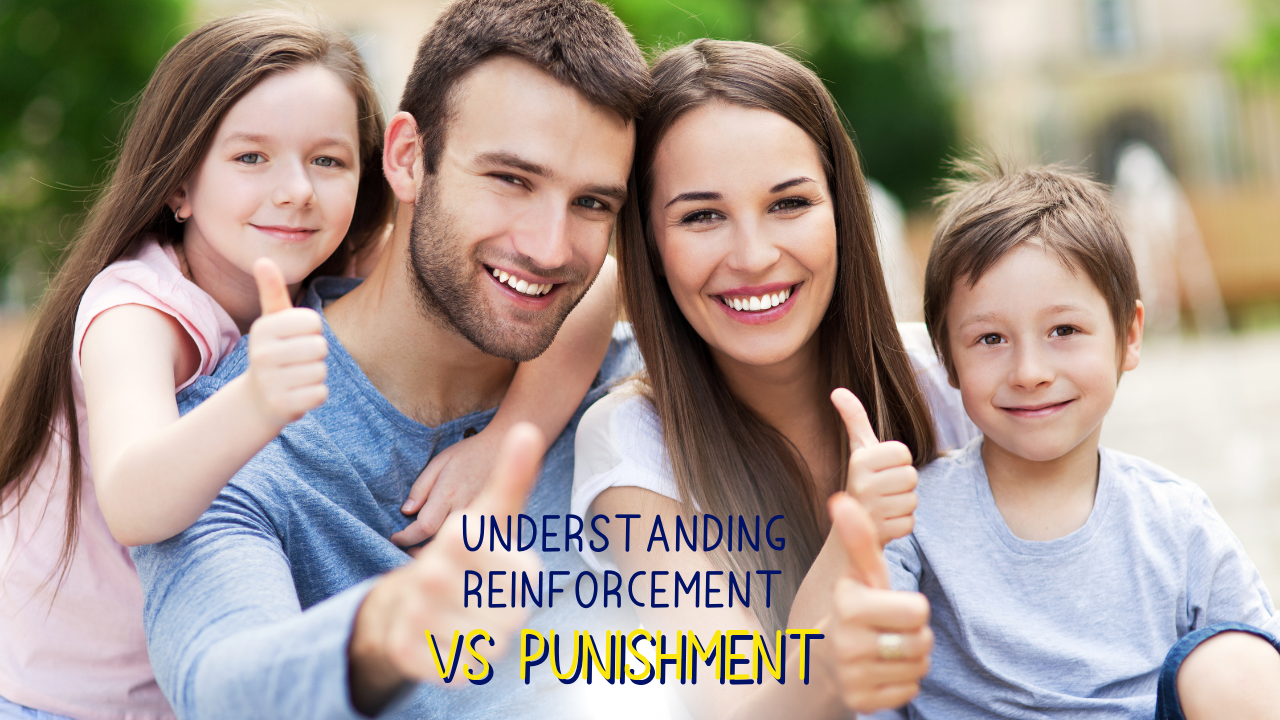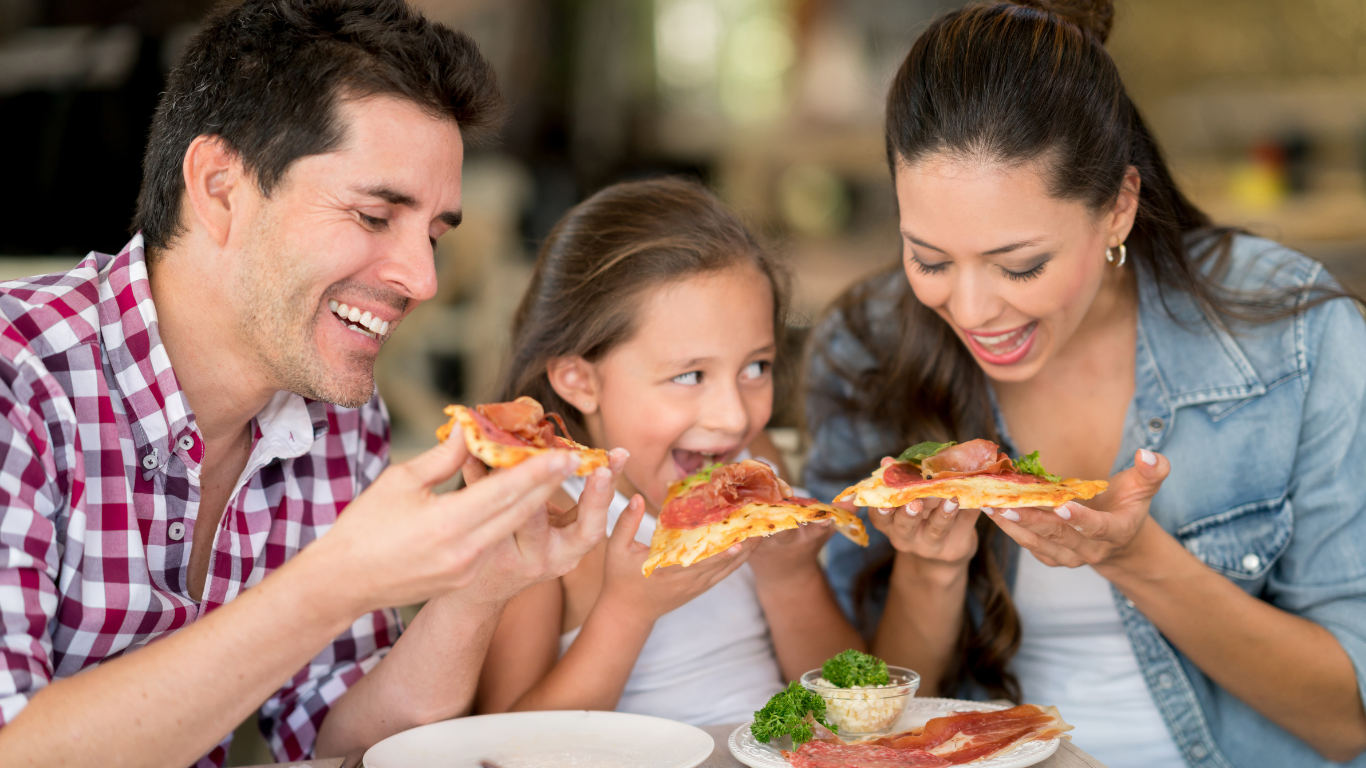Understanding Reinforcement vs. Punishment
Mar 23, 2023
I cannot post another week of tips without covering reinforcement and punishment because they are such an integral part of the Consequences category in my 5 C's parenting framework (see The 5 C's to Amazing Parenting). These are terms you have probably heard before; you may thoroughly understand them or have an inkling about what they mean. Reinforcement and its counterpart punishment are critical to parenting.
The quick psychology history lesson is that these terms are part of B.F. Skinner’s operant conditioning theory developed in reaction to John B. Watson’s classical conditioning theory (think Pavlov’s dogs) and spawned the behaviorism movement in psychology. We’ll talk more about Pavlov and Watson another time.
We now know that both forms of behaviorism are valid in different applications, and from the later cognitive psychology movement, we know that thoughts and attitudes clearly cannot be ignored as influences on behavior. Today, let’s focus on how parents can use reinforcement and punishment to improve their parent-child interactions. To understand these concepts, it is simplest to look at them in a grid:
| Positive | Negative | |
|
Reinforcement |
Adding something good
|
Removing something bad
|
|
Punishment |
Adding something bad
|
Removing something good
|
Reinforcement comes in two types, positive and negative. Positive reinforcement means adding a pleasant stimulus (adding something good) to increase the likelihood of a behavior. For example, your child says, “May I have the milk, please,” you hand the milk and say, “Here you go, Johnny, and I love how you used your good manners.” Johnny is happy to receive your praise and is likelier to say please in the future. Other examples of positive reinforcement are clapping when a child puts their shoes on by themselves, scheduling a play date when they show good behavior at home, or getting a lollipop at the end of the grocery trip if they sit nicely in the cart.
Negative reinforcement means removing an aversive stimulus (taking away something bad) to increase the likelihood of a behavior. For example, some of my kids have gone through phases where they would get in the car and take forever to put on their seatbelts. After trying a few different approaches, I found the one that worked best for my munchkins is singing the seatbelt song, “The first thing you do when you get in the car is strap in, strap in,” and simply saying that over and over again (with increasing volume if necessary) until they strap in. Of course, if you have a good singing voice, this technique may not work for you, but when I say those first few words of the song, they usually buckle up quite quickly. More examples of negative reinforcement are a child putting away their shoes so mom will stop nagging them, letting a child walk on the sidewalk without holding your hand when they agree to stay right next to you, or switching the radio station only after a child adds “please” to their request.
Punishment also comes in two types, positive and negative. The term positive can be very confusing in this context but remember, positive just means to add something (good or bad). Positive punishment means adding an aversive stimulus (adding something bad), but this time the stimulus is intended to decrease the likelihood of a behavior. For example, if my boys get too rough with each other, they are put to work cleaning the house. First, the offending party must “check in” with the victim. In our house, this means acknowledging what happened and what should be done differently in the future and in a friendly tone of voice, inquiring as to how the guilty party may help to make it up to the victim (e.g., take a turn with a coveted toy, clean up the toys they were playing with, etc.). Usually, two boys are involved, and both contribute to the problem behavior. If the roughness continues and mom has to get involved, they are off to wipe down the walls, doors, or table chairs. A little physical labor helps to get out that extra energy and deter further roughness. Other examples of positive punishment are speaking to your child in a firm tone, giving a disapproving look when you see your child behaving poorly, or having to say 10 nice things for every unkind thing they say to someone.
Finally, negative punishment means removing a pleasant stimulus (taking away something good) to help decrease the likelihood of a behavior. For example, when one of my boys was 7 years old and regressed to biting siblings when he was angry, we tried a few approaches to solve the problem. We ultimately had to step things up by making the rule that if he bit someone, that person could choose any one of his Lego sets to play with for an entire week. The next time he bit a sibling, we enacted the consequence; there were tears and complaints that the punishment was too harsh, but we felt that this was a very serious behavior that needed to be stopped. No sibling should live in fear of being bitten in their safe home. It tugged on my heartstrings to see him so upset, but guess how many times he has bitten a sibling since then…zero! More examples of negative punishment are leaving a play date early for poor behavior, skipping dessert if you don’t eat dinner, or removing toys if you don’t clean up after playing.
So there you go, four more tools in your parenting toolbelt to help motivate your child’s behavior to align with your expectations. Amazing parents use reinforcement throughout the day, every day. Punishment should be used infrequently after first attempting other options. In each of the examples above, we first talked with the kids about their behavior and the desired behavior, processed the emotions contributing to their behavior, and patiently waited for them to learn before implementing consequences.
Parenting can be very frustrating at times, and even amazing parents sometimes lose their cool and yell at their children, but your goal should be to avoid that form of positive punishment. I’ll dedicate a future post to data related to physical punishment; for today, please know that physical punishment, such as spanking, should never be used. There are many better options for helping your child learn appropriate behavior that foster a positive long-term parent-child relationship. Now that you understand these terms better, reflect on how you interacted with your children today and see if you can fit examples from your own life into these four categories. If you’re heavy on the punishment side, make it your goal to focus on reinforcement tomorrow!
Operant conditioning is part of the Consequences category in my 5 C’s parenting framework (see The 5 C's to Amazing Parenting). To find more posts in this category, use the category search menu on the right of the screen. Keep up the good work on your amazing parenting journey!
P.S. For more real-life examples of how to use positive reinforcement and practical tips to improve your day-to-day parenting experience, check out my free download, How to Make Dining Out With Your Children Enjoyable!
If you’re looking for some inspiration on easy-to-carry toys to keep your young ones entertained while you’re waiting for your meal to arrive, check out my Treasures - Dining Out page. I have a whole category of products to help make your restaurant experience more enjoyable.





